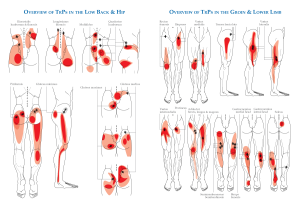Chiari Malformation

What is Chiari Malformation?
Chiari malformation is a condition where part of the brain extends into the spinal canal due to a structural defect. This happens because the back of the skull is too small or irregularly shaped, putting pressure on the brain and pushing it downward. As a result, the normal flow of cerebrospinal fluid (CSF) can be interrupted. CSF is the fluid that surrounds and protects your brain and spinal cord. If this occurs, you might experience various neurological symptoms, such as headaches, balance issues, and problems with coordination.
Types of Chiari Malformation
Chiari I Malformation
Chiari I malformation is the most common type and is usually diagnosed later in childhood or adulthood. In this condition, the lower part of your brain, called the cerebellar tonsils, extends into the opening at the base of your skull (the foramen magnum). Key symptoms often include:
- Persistent headaches
- Neck pain
- Dizziness
- Balance problems and an unsteady walk
- Changes in speech, such as hoarseness
- Poor coordination in your hands
- Numbness and tingling in your hands and feet
- Difficulty swallowing, sometimes accompanied by gagging, choking, and vomiting
In addition to these common symptoms, Chiari I malformation can sometimes lead to:
- Ringing or buzzing in your ears (tinnitus)
- Muscle weakness
- Scoliosis – curvature of the spine linked to spinal cord impairment
- Slow heart rate
- Breathing issues, including central sleep apnea, where breathing stops during sleep
Chiari II Malformation
Chiari II malformation is more severe and is typically identified at birth. This type is often linked with spina bifida, a condition where the spine doesn’t form properly.
In Chiari II, both the lower part of the brain (the cerebellar tonsils) and the brainstem are pushed down into the spinal canal. This can lead to a buildup of fluid in the brain, known as hydrocephalus, which can cause additional complications.
Symptoms of Chiari II malformation can include:
- Changes in breathing patterns
- Difficulty swallowing, which can cause gagging
- Rapid downward eye movements
- Weakness in the arms
Chiari II malformation is typically detected through an ultrasound during pregnancy. However, it can also be diagnosed after birth or during early infancy.
Chiari III Malformation
In this condition, both the cerebellum and the brainstem protrude through an abnormal opening at the back of the skull. This often leads to significant neurological issues, such as severe headaches, muscle weakness, and problems with coordination and balance.
Babies born with this condition might also have visible swelling or a sac-like formation on the back of their head or neck.
Due to the severity of this malformation, it can cause profound developmental and functional deficits, requiring complex medical management and often surgical intervention.
Chiari IV Malformation
Chiari IV malformation is an extremely rare and severe type. It involves an underdeveloped cerebellum and severe brain abnormalities. Unlike other types of Chiari malformations, the cerebellum does not extend into the spinal canal. This condition is often incompatible with life due to its profound impact on brain development and function. Babies born with Chiari IV typically have significant neurological impairments, and the prognosis is very poor.
Diagnosing
Your doctor will review your medical history and conduct a physical examination to diagnose. Diagnostic tests may include:
- Magnetic Resonance Imaging (MRI): The most effective imaging technique for visualizing the brain and spinal cord?
- Computed Tomography (CT scan): Useful for viewing the bones in your skull and spine.
Managing Chiari Malformation and Treatment Options
- Monitoring
If your Chiari malformation is not causing significant symptoms, your doctor may recommend regular monitoring with periodic MRI scans to watch for changes?. - Medications
Medications can help manage symptoms such as pain and headaches. Over-the-counter pain relievers, muscle relaxants, and anti-inflammatory drugs may be prescribed?. - Surgery
Surgery is the primary treatment for this condition. The most common procedure is posterior fossa decompression, which involves removing a small section of bone at the base of your skull to relieve pressure and improve CSF flow. Additional surgical options may include:- : removing part of the vertebra to create more space
- Duraplasty: opening the membrane covering the brain and spinal cord and placing a patch to expand it?
When to Seek Care
If you or a loved one experiences symptoms like persistent headaches, neck pain, balance issues, or difficulty swallowing, it’s essential to speak with a pain specialist or neurosurgeon. They can help diagnose the cause of your symptoms and recommend treatment.
Advanced imaging techniques and surgical options offer hope and relief for many patients.
If you’re worried you may have Chiari malformation or other spinal conditions, don’t delay – today!




